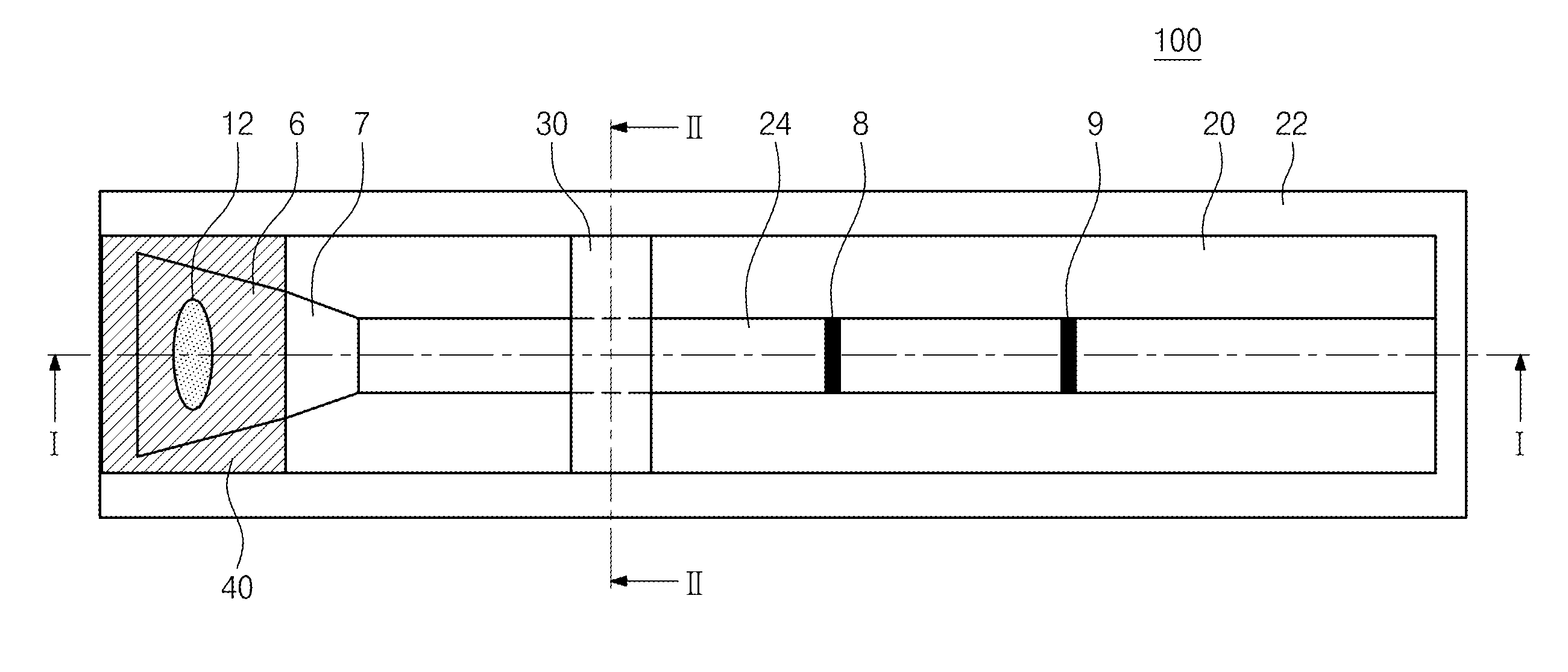Microfluidic device and microfluidic analysis equipment
a microfluidic and microfluidic technology, applied in fluorescence/phosphorescence, instruments, laboratory glassware, etc., can solve the problems of inconvenient testing of analyte concentration, inability to accurately quantify the concentration of analyte, and pores formed in the membrane, so as to achieve simple and accurate control of fluid flow
- Summary
- Abstract
- Description
- Claims
- Application Information
AI Technical Summary
Benefits of technology
Problems solved by technology
Method used
Image
Examples
Embodiment Construction
[0036]Preferred embodiments of the present invention will be described below in more detail with reference to the accompanying drawings. The present invention may, however, be embodied in different forms and should not be construed as limited to the embodiments set forth herein. Rather, these embodiments are provided so that this disclosure will be thorough and complete, and will fully convey the scope of the present invention to those skilled in the art.
[0037]FIG. 1 is a plan view of a microfluidic device according to an embodiment of the present invention. FIG. 2A is a cross-sectional view taken along line I-I of FIG. 1 according to an embodiment of the present invention. FIG. 2B is a cross-sectional view taken along line I-I of FIG. 1 according to another embodiment of the present invention. FIG. 3 is a cross-sectional view taken along line II-II of FIG. 1.
[0038]Referring to FIGS. 1, 2A, 2B, and 3, a microfluidic device 100 according to this embodiment includes a lower plate 20 a...
PUM
 Login to View More
Login to View More Abstract
Description
Claims
Application Information
 Login to View More
Login to View More - R&D
- Intellectual Property
- Life Sciences
- Materials
- Tech Scout
- Unparalleled Data Quality
- Higher Quality Content
- 60% Fewer Hallucinations
Browse by: Latest US Patents, China's latest patents, Technical Efficacy Thesaurus, Application Domain, Technology Topic, Popular Technical Reports.
© 2025 PatSnap. All rights reserved.Legal|Privacy policy|Modern Slavery Act Transparency Statement|Sitemap|About US| Contact US: help@patsnap.com



